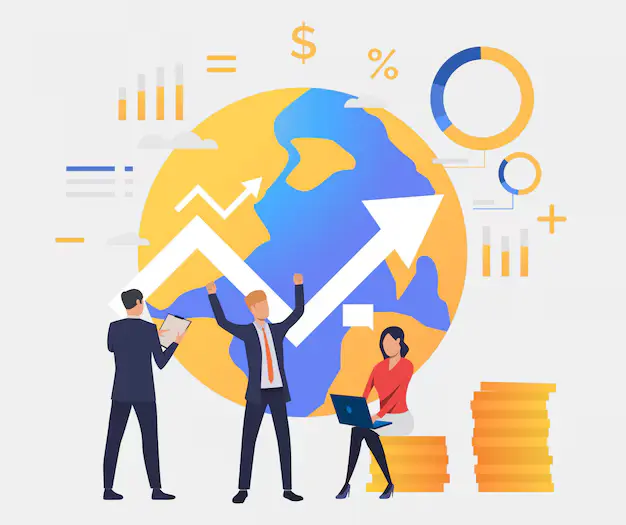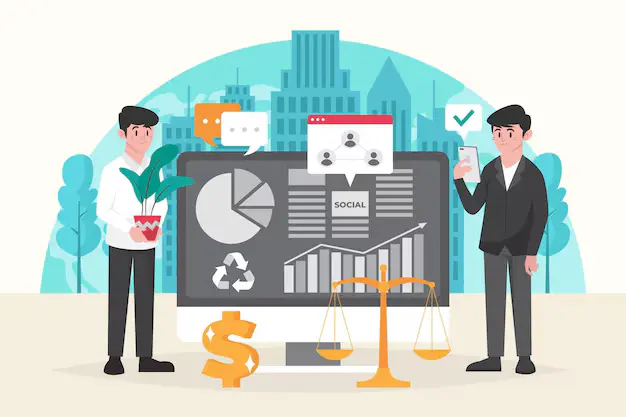Unlock the Economic Environment of Business For More Profit
Table of Contents

- jaro education
- 17, August 2024
- 12:00 pm
Overview
In the dynamic marketplace of today, businesses do not operate in a vacuum. They are products of a thousand factors working together in a synergy that can be termed an economic environment. It is, therefore, very critical to have a clear understanding of the economic environment of business in which business takes place so that certain decisions can be made and business strategies laid down. Let us delve into the economic environment of business and its importance, accompanied by some real-world examples.
Imagine piloting a ship without knowledge of the weather forecast or sea conditions. Running a business without an understanding of its economic environment is rather like that. It comprises the external economic factors that impact business performance, running from the rate of inflation and the exchange rate down to government policies and economic trends. An understanding of the economic environment of business helps businesses steer their way through challenges and exploit opportunities more effectively. You can understand more about this in the Executive MBA Program offered by Dayananda Sagar University, Bengaluru (DSU).

What is the Business Economic Environment?
The economic environment of business may be broadly defined as a combination of various economic factors that prevail in the business setting and together influence the operations of any business and the decision-making process. These factors are both macroeconomic, such as national economic growth, inflation, and unemployment rates, and microeconomic, like consumer behavior and market demand and competition.
Elements of Economic Environment - Key Economic Conditions
- Economic Policies: Government actions through fiscal and monetary policies may drastically affect the business atmosphere.
- Global Economic Environment: This would include international economic conditions, which means exchange rates, global trade policies, and foreign economic stability.
- Market Structure: The type of market competition and the presence or absence of monopolies or oligopolies determines the way businesses operate.
- Changes in Technology: Advances in technology create newer opportunities and challenges for businesses in a variety of ways
Why is the Economic Environment important?
The knowledge of the Economic Environment of Business is impinged for the following reasons:
Strategic Planning and Decision Making
Businesses were banking on economic forecasts and trends to chart their strategies. For instance, if there is a recession, they may cast their focus on cost-cutting. If the economy is doing very well, expansion may be the mainstay. In that way, by reading the economic environment, businesses can be proactive rather than purely reactive.
Risk Management
Economic factors include inflation, interest rates, and exchange rates—each carrying different types of risks. Knowing these elements will enable the business to adopt hedging diversification or any other risk management strategy against possible losses.
Competitive Advantage
Companies that can read economic signals very well gain an edge over others. For example, a company anticipating inflationary pressures to raise raw material prices may stockpile resources in advance and save on costs and thereby sustain profits.
Adaptability to Policy
Most of the time, government policies bear direct implications on business operations. The knowledge of the same helps the business to adapt itself fast and move in tandem with the regulations, hence evading legal hassles and fines.
Examples in a Real-World Economic Environment
Let us take some examples in the real-world economic environment to understand the economic environment of business more elaborately:
Financial Crisis, 2008
The best example of how macroeconomics can influence any business around the world is the financial crisis in 2008. The tumble of the key financial institutions turned into the worst recession. Lower sales, greater credit frictions, and heightened uncertainty were hitting companies from all walks of business. Only those that could adapt to such conditions quickly, such as by diversification of products or streamlining of operations, survived and thrived after the crisis.
Technological Advancements in the Tech Industry
Technological changes have always remade the economic environment of business. As seen, the invention of the internet and other digital technologies changed the structure of various industries. Companies, like Amazon and Netflix, boarded this change and changed their business models to exploit the opportunities that became available. These successes make for a fine case study in being attuned to the technology shifts occurring within the economic environment of business.
Trade Wars and Tariffs
Recent trade tensions, like that between the US and China, have had impacts on global supply chains and business strategies. Companies dependent on these international trades thus bore increased tariffs and uncertainty. Most of them had to review their supply chains, sourcing strategies, and even target markets. Businesses that were able to adjust to such new conditions with speed mostly remained competitive.
Importance of Environmental Economics
It is that part of economics that deals with the economic effects of environmental policy and analyses the cost-effectiveness of sustainable practices. With a better focus on sustainability and environmental responsibility, business sectors are more and more obliged to understand this area.
Sustainable Business Practices
The trend of businesses moving toward sustainability is on the increase. By doing so, not only are they aiming to work within the regulatory boundaries set by governments, but are also working toward rebranding themselves to ensure greater customer attachment to the brand.
Resource Efficiency
Environmental economics stresses resource efficiency. It is through reduced levels of waste and other lapses in resource usage that firms can save money and make additional profits.
Regulatory Compliance
Governments around the world are increasing their efforts on environmental regulations; therefore, a knowledge of environmental economics keeps a firm out of trouble from regulators and the public by avoiding fines and enhancing standing.
Role of Economic Environment in Business Strategy
A thorough knowledge of the economic environment of business has to be built into the business strategy. The following are how businesses can use such knowledge effectively:
Market Analysis and Forecasting
Market analysis gives an understanding of the current economic conditions and allows one to forecast trends that will occur in the future. This thus enables the identification of opportunities and threats in advance to enable prior and proper decision-making.
Diversification Strategies
The knowledge of the economic environment of business allows businesses to adopt diversification strategies to reduce risk. Diversification may be into new markets or the introduction of new product lines to avoid losses during economic downturns experienced at times in specific areas.
Investment and Financial Planning
Economic factors thus have the power to drive investment decisions and financial planning. For example, if interest rates are low, a business may want to incur debt to finance expansion, while high interest rates might lead to more cautious financial policies.
How Governmental Policies Affect the Economic Environment
The government steers the economic environment of businesses considerably through its policies. From fiscal policies, embracing the reforms on tax and governmental expenditure to monetary policies, including changes in interest rates, these decisions make a difference for business at various levels.
Fiscal Policies
Government expenditure and taxation policies influence economic growth, consumer spending, and business investment. For instance, tax breaks for certain industries can spur growth. Increased taxes will lower consumer spending and reduce the overall economic activity thereafter.
Monetary Policies
Central banks adopt monetary policies to control money supply and interest rates. Low interest rates would make people borrow and invest; high rates are seen to slow down inflation. Businesses need to be attuned to these changes so that they can adjust financial strategies accordingly.
Regulatory Policies
Influencing the economic environment are also environmental regulations, labour laws, and trade policies. Businesses have to evolve with these regulations to remain compliant and competitive. For example, stricter environmental legislation calls for companies to invest in greener technologies.
Global Economic Environment and Its Influence
The global economic environment of businesses will be the essential element in business strategy formulation in a world that is interdependent. International trade policy, global economic trends, and foreign exchange rates can individually make a difference in business operations.
Exchange Rates
A change in the rate of exchange may decrease or raise the cost to the importer and add value to the exported products. Any business that deals with international trade has to be aware of the changes to keep its costs and price strategies in control.
Global Trade Policies
Trade Agreements and Tariffs: These will continue to influence access to and competitiveness in markets. Firms need an understanding of such policies to enable them to fine-tune their supply chains and achieve entry into newer markets. Knowing how the mechanics of international trade operate can create a strategic advantage.
Economic Trends
Global economic trends, like economic growth in emerging markets or recessionary conditions in developed economies, can throw up a good many opportunities and challenges. Businesses better placed and capable of forecasting and adjusting to these trends can succeed.
Technological Advancements and Economic Environment
The economic environment of business consists of a considerable part of technological innovation. At a very rapid rate, technologies are being developed and revolutionized; they turn industries upside down, create new markets, and shift consumer behaviours.
Disruption and Innovation
Technological disruptions, like the Internet invasion, have entirely changed the face of industries. The companies taking the wave of innovations have leveraged newer opportunities, and companies which were resistant to change started falling apart.
Efficiency and Productivity
Technology enables better business efficiency and productivity. This would be through automation, data analytics, and digital platforms in minimizing operations, reducing costs, and enhancing the decision-making process.
Consumer Behavior
Technology affects how consumers behave and what they expect. Businesses have to keep pace with changing consumer preferences that come with technological advancements, such as people moving to online shopping or demanding services online.

Conclusion
The economic environment of business is a multi-dimensional landscape that deeply influences decision-making and planning strategies. An understanding of the various elements that form this environment and how each affects would put businesses in a better position to hurdle over obstacles and capitalize on opportunities. Enterprises have to understand trends in worldwide economics, environmental economics, and every other factor in between, analyze, and adapt to hold a place in the long run. Be it through strategic planning, risk management, or adaptation of policy, only those businesses able to stay tuned to their economic environment can thrive in a changing world.
You will understand how the economic environment of business works and, in the process, develop your strategic acumen so that you can also manage complex modern business landscapes. This is an understanding that is important to executives and business leaders who intend to take their organizations down the path of sustainable growth and resilience.












